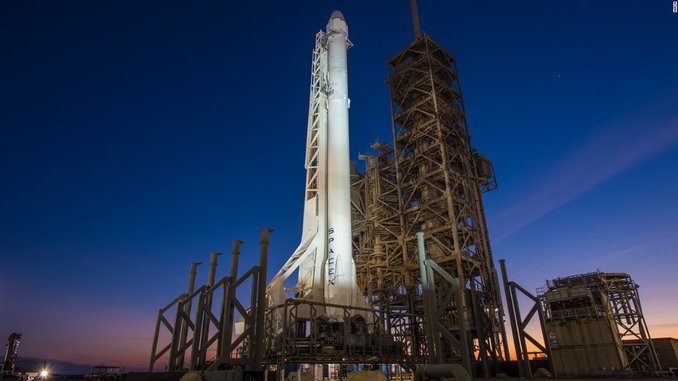
A Dragon spacecraft will return to the International Space Station for the third time tomorrow, after today’s planned launch was delayed due to bad weather high above Florida.
According to Space.com, the next opportunity for the mission will be at 12:29 pm ET on Dec. 5. You can watch the launch of the Dragon, using a Falcon 9 rocket, and the subsequent landing of that rocket’s reusable booster on a drone ship in the Atlantic ocean, on SpaceX’s live stream.
The vehicle, built by Elon Musk’s company SpaceX, will carry more than two tons of supplies and research cargo to the six occupants of the orbiting habitat. A NASA official declined to confirm if any holiday surprises for the astronauts will be on board, but did note that “Santa’s sleigh is certified for the vacuum of space.”
This is SpaceX’s third supply flight to the ISS this year, and 12th launch to orbit overall, a record that means it will fly more than its main competitors, United Launch Alliance and Arianespace, for the third year in a row.
SpaceX is hoping to fly another three times before the end of the year: To launch a Japanese communications satellite, fly another batch of its own Starlink satellites and perform an in-flight abort test of its new spacecraft, the Dragon 2, which it is building to carry astronauts to the station.
Musk himself won’t be at Kennedy Space Center in Florida; he is testifying on the second day of a civil defamation suit brought after he called a critic a “pedo guy” on Twitter.
Today’s launch is the penultimate mission of the 20 cargo flights NASA originally hired SpaceX to perform. The space agency’s decision to choose private companies to supply the station rather than building its own spacecraft allowed Musk’s team to develop their space vehicles and become the word’s leading rocket-maker. That model of public-private partnership has now been expanded to everything from astronauts to moon rocks.
In 2020, SpaceX will begin using an advanced version of the Dragon spacecraft, based on the design that will carry astronauts, to start a new cycle of at least six supply missions to the ISS.

Be the first to comment